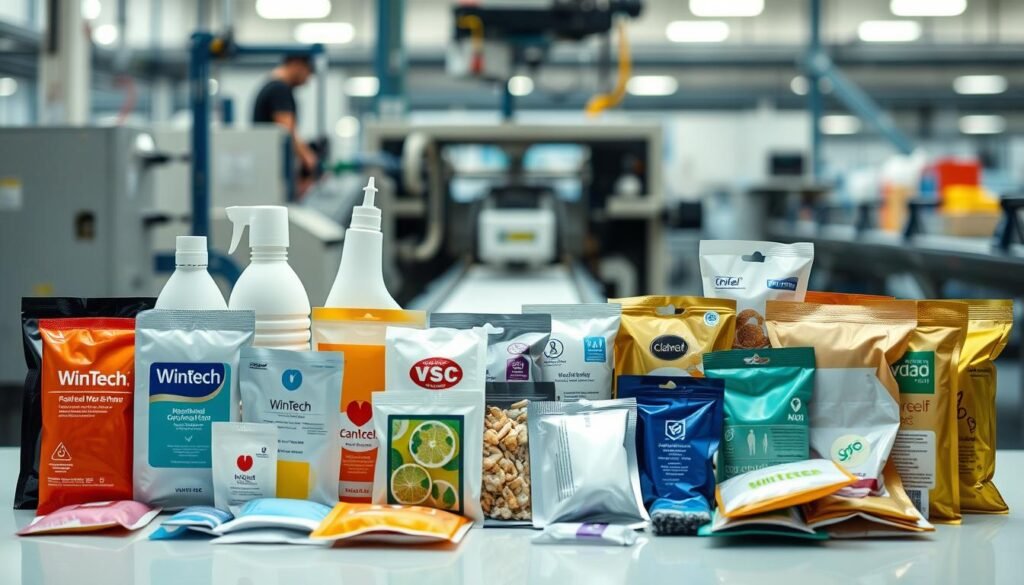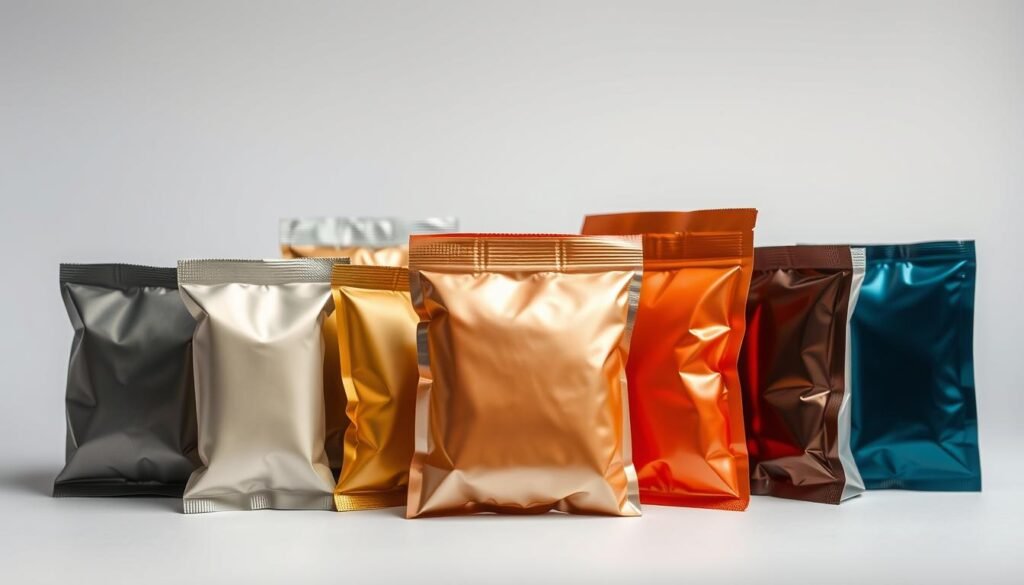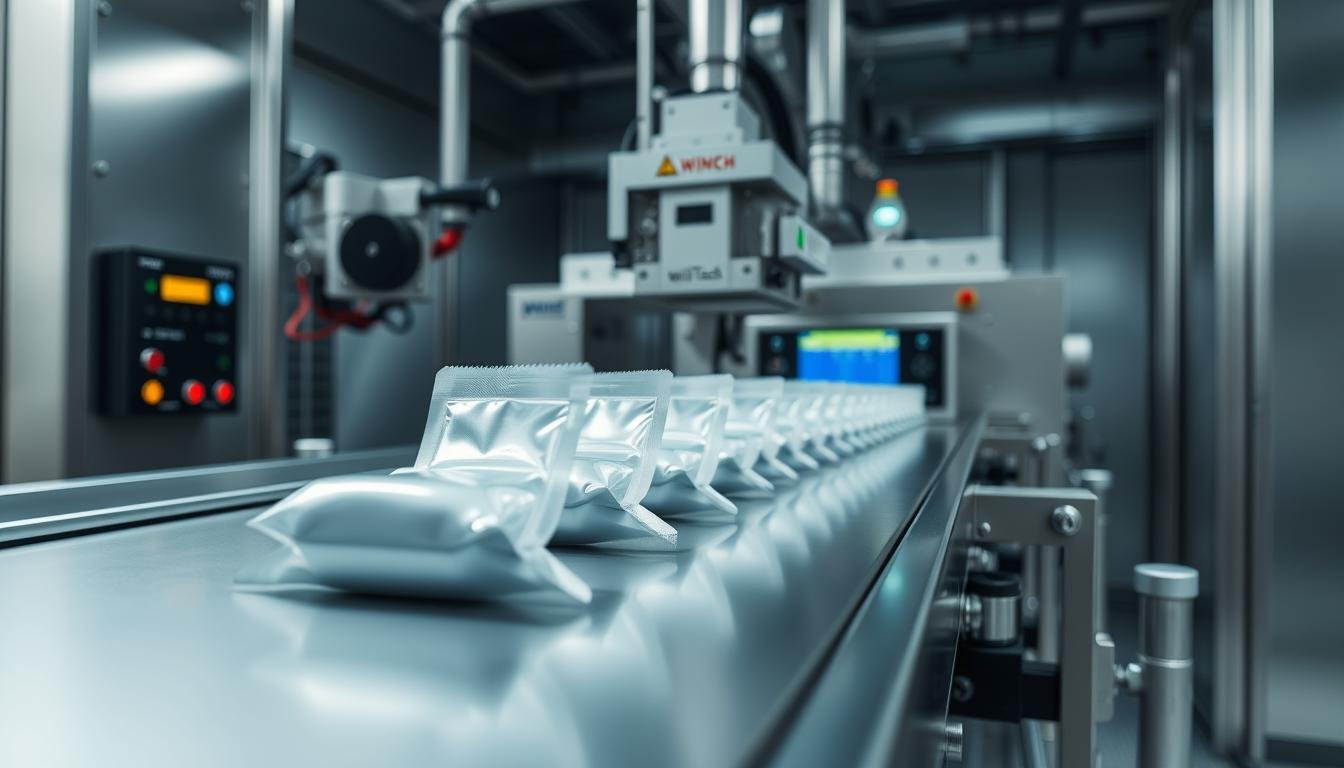Have you ever wondered how tiny packaging solutions revolutionize product delivery and quality control? What are sachets transforming in modern manufacturing? These small sealed pouches represent a critical innovation in packaging technology that impacts multiple industries.
What are sachets becoming in today’s advanced manufacturing landscape? Syntegon’s cutting-edge solutions for pharmaceutical, biotech, and food industries demonstrate the powerful potential of these single-use packets. Packaging sachets offer precise, controlled product distribution across diverse sectors, enabling manufacturers to maintain stringent quality standards.
What are sachets of Wintech Package leverages sophisticated inline quality inspection systems to detect potential defects in sachet production. These advanced technologies ensure each packaging sachet meets rigorous performance and safety requirements, protecting both product integrity and consumer experience.
Key Takeaways
- Sachets represent innovative packaging solutions across multiple industries
- Inline quality inspection systems are crucial for defect detection
- Small sealed pouches enhance product distribution precision
- Technological advancements improve packaging reliability
- Quality control is essential in sachet manufacturing
What are sachets: An Overview of Their Uses
Sachets have revolutionized packaging across multiple industries, offering compact and efficient solutions for product distribution. These small, versatile containers provide an innovative approach to packaging that meets diverse consumer needs while addressing environmental and practical concerns.

Understanding what are sachets involves exploring their remarkable versatility and application across different sectors. Sachets vs packets represent a more streamlined and precise packaging method, allowing businesses to deliver precise quantities of products with minimal waste.
Industrial Applications of Sachets
Sachets play critical roles in multiple industries, each with unique packaging requirements:
- Food sachets: Single-serve condiments, spices, and instant beverages
- Cosmetic sachets: Sample-sized skincare products and travel-friendly toiletries
- Pharmaceutical sachets: Precise medication dosages and medical supplements
- Industrial sachets: Chemical samples and specialized product distributions
Enhancing Product Shelf Life
Biodegradable sachets have emerged as a game-changing solution for extending product freshness. By creating hermetic seals and protecting contents from external contaminants, sachets significantly improve product preservation and reduce potential spoilage.
| Sachet Type | Average Shelf Life Extension | Primary Applications |
|---|---|---|
| Food Sachets | 3-6 months | Spices, Instant Meals |
| Cosmetic Sachets | 12-18 months | Skincare Samples |
| Pharmaceutical Sachets | 24-36 months | Medical Supplements |
Sachet Material Composition
Modern sachets are crafted from advanced materials designed for specific industry requirements. Manufacturers now prioritize biodegradable sachets that balance product protection with environmental responsibility, using materials like:
- Recyclable polymers
- Plant-based composites
- Multi-layer barrier films
- Compostable packaging materials
Understanding the Characteristics of Sachets
Sachets have revolutionized packaging across multiple industries, offering innovative solutions for product preservation and convenience. These compact containers provide flexible packaging options that meet diverse consumer needs, from tea sachets to travel-friendly packaging solutions.

Material Types in Sachet Production
When exploring what are sachets, material selection plays a crucial role. Different packaging sachets utilize various materials to ensure product quality and protection:
- Multilayer polymer films
- Aluminum-lined materials
- Biodegradable composites
- Food-grade laminated structures
Flexible Packaging Advantages
Sachets for travel and home use offer remarkable benefits through flexible packaging technologies. The innovative design allows for:
- Reduced product waste
- Enhanced product shelf life
- Lightweight and compact storage
- Customizable barrier properties
| Sachet Type | Primary Application | Key Material |
|---|---|---|
| Tea Sachets | Beverage Packaging | Biodegradable Paper |
| Pharmaceutical Sachets | Medical Dosage | Multi-layer Polymer |
| Travel Sachets | Personal Care | Aluminum-lined Film |
The SealScope® technology ensures precise quality control during sachet production, guaranteeing optimal packaging integrity and maintaining product freshness across various applications.
What are sachets: Quality Control and Inspection
Quality control remains critical in packaging sachets, where precision determines product integrity. When exploring what are sachets from a manufacturing perspective, advanced inspection technologies play a transformative role in ensuring each small sealed pouch meets stringent standards. Innovative systems like SealScope® have revolutionized how manufacturers detect potential defects during production.
Packaging sachets require meticulous examination to prevent potential contamination or structural weaknesses. Wintech Package utilizes cutting-edge inline inspection technology that scans every aspect of small sealed pouches, identifying microscopic imperfections that could compromise product safety. These sophisticated systems leverage optical sensors and artificial intelligence to evaluate seal integrity, material consistency, and overall packaging quality.
How Wintech Package Ensures Quality in Sachet Production
Your sachet production process demands rigorous quality control mechanisms. NJM’s inspection systems provide comprehensive screening that examines each packaging sachet for potential structural issues. By implementing multi-stage verification protocols, manufacturers can detect potential defects before products reach consumers, ensuring maximum reliability and safety in every small sealed pouch.
Advancements in Inline Inspection Technology for Sachets
Modern inspection technologies have transformed what are sachets from simple containers to precision-engineered packaging solutions. High-resolution cameras, automated detection algorithms, and real-time monitoring systems work synergistically to validate every aspect of sachet production, minimizing human error and maximizing product consistency across manufacturing lines.
What are Sachets and How Can Defects Be Detected?
Detecting defects in packaging sachets requires a multifaceted approach. Visual inspection, seal strength testing, and dimensional analysis help identify potential weak points. Advanced technologies now enable manufacturers to catch microscopic imperfections that traditional methods might overlook, ensuring each small sealed pouch meets the highest quality standards before distribution.

